I signed up to the school trip.
It was a surprisingly difficult decision. On the one hand I had the opportunity to go to Xi’an – one of the ancient capitals of China – famed around the world for the Terracotta Warriors, a giant army of sculptures buried thousands of years ago to protect an emperor. The trip would be discounted too, since I would be with the school, and all organised for me. Sounds pretty good, right?
On the other hand though, Xi’an wasn’t somewhere I was exactly going to miss, anyway. At some point in my time in China, I would get around to going regardless, and I might have preferred it if the trip had been going somewhere more…unusual. There was also the fact that, being one of the most popular destinations in China, most teachers I knew had already been at some point or another. They weren’t going to go again. Oh, and it was a school trip. There was the distinct possibility that the trip would be, as school trips tend to be, a highly controlled affair. To combat this possibility, we had a plan. A plan to escape the tour, and get away from the group.
That plan didn’t really pan out. Or at least, not exactly as hoped.
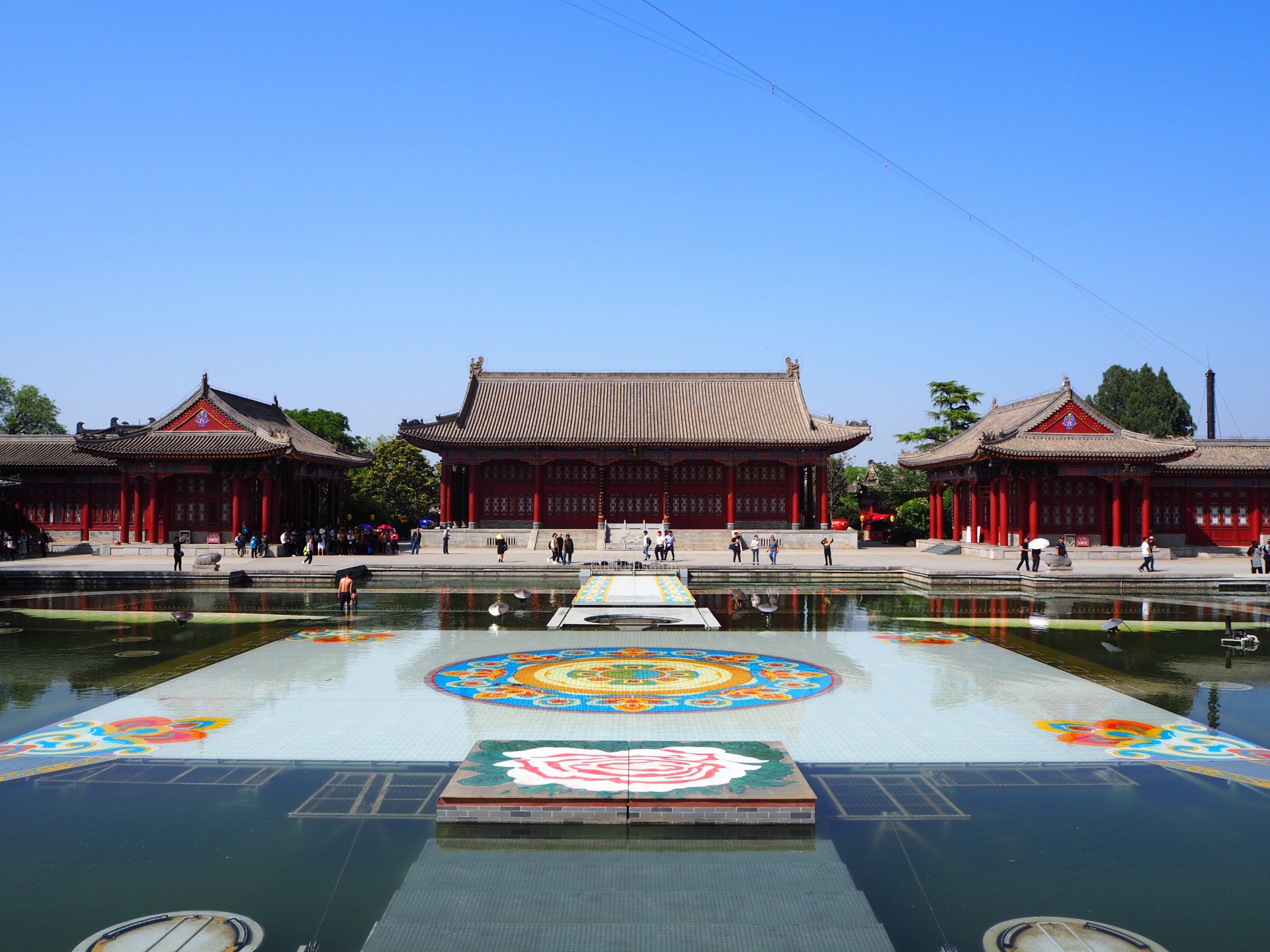
It’s hot out. Do you think people would mind if I took a dip?
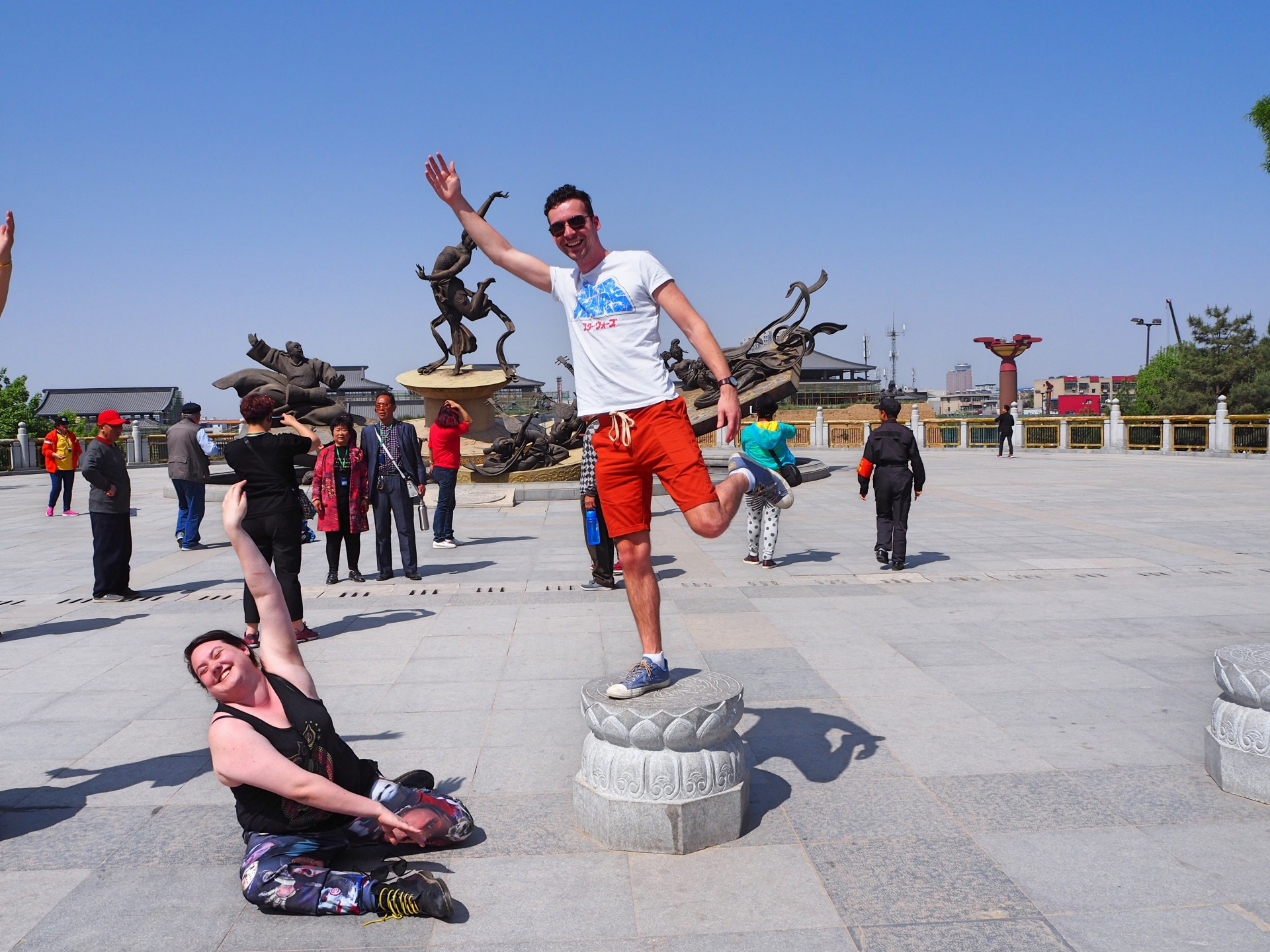
Attempting to recreate a pose. Unsuccessfully.
Setting off and the Squares
In the early hours of an April Sunday, I arrived at Wuyi square, departure point for the trip, slightly groggy from lack of sleep. Amazingly, I was one of the first there, and I stood awkwardly for a few minutes before other teachers and TAs started to dribble in. It’s unusual for me to be so timely, but I was already regretting my measly two hours in bed. That was definitely a mistake.
We were soon on our way. First to the airport. Then to the plane. Then off to Xi’an. By about half 10 in the morning we were there, or at Xi’an airport at least. It was surely only a matter of time until we got to the city centre and could look around, right? Right?
Maybe not; We had a couple of stops first. We were split onto about four different coaches to get to these stops, each a significant journey from the next. Helpfully, I was on a coach where I knew practically no-one. Of course, there were no teachers from my branch on there, but also no other teachers or TAs I knew. I quickly swapped onto another with a free space, much to the dismay of those tasked with keeping track of us.
The stops themselves had originally been described as a couple of squares to look at, which sounded distinctly uninteresting. That made us think that they were in the centre, and we thereby could skip out of the tour. No such luck. These were neither squares nor in the centre. They were memorials and tombs on the outskirts of the city. To be fair, that did make them more interesting, but it was still pretty annoying to be so in the dark about where we were going. This was a theme that would follow us through the weekend.
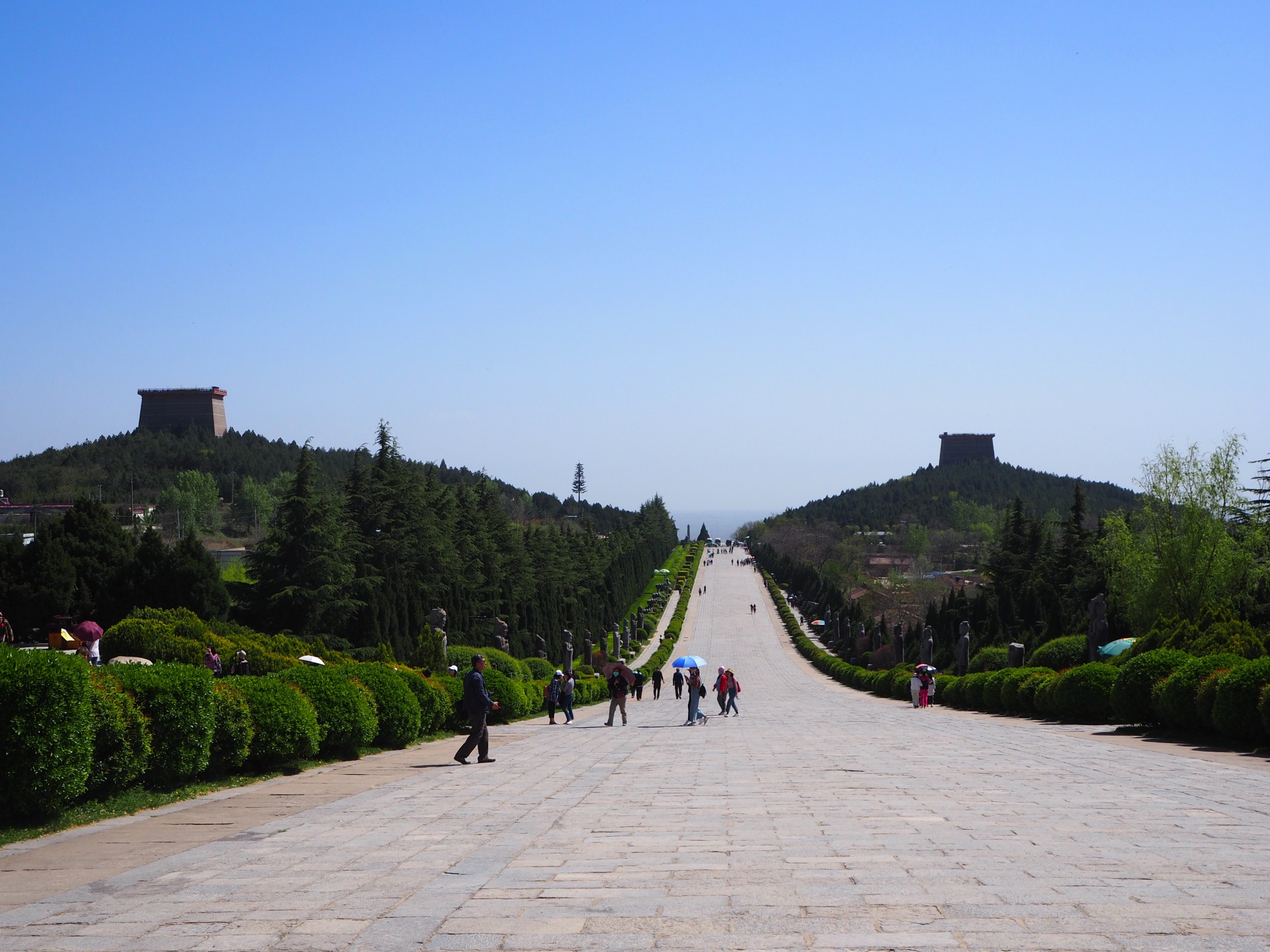
Apparently the landscape around here is supposed to form the figure of a woman. I wonder what this might be…
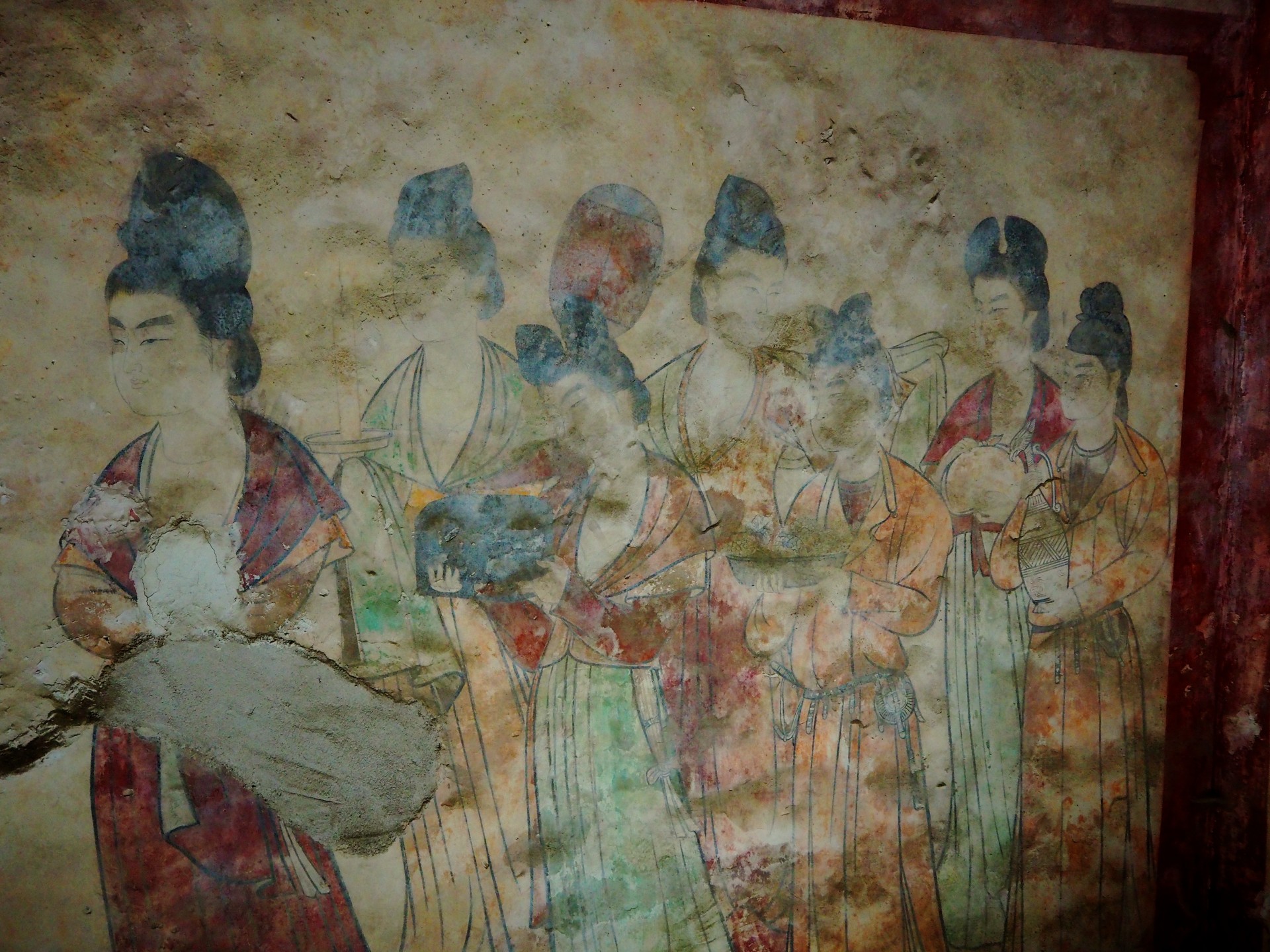
It’s amazing what you find inside a tomb.
A Slightly Creepy Village
After the squares/not squares it was off to a village. Apparently it had been a traditional village some years ago, and now was more of a tourist village. Yeah, it sounded strange to us too, and it was strange. When we got there, everybody disappeared off very quickly, and suddenly we weren’t 100% where everyone had gone. Those of us left behind started to search down a few alleys, but these turned out to be creepy experiences. Stalls with the most rubbish tourist tat, houses half abandoned and a few caged animals. Even a sad faced Mao looked in difficulty to greet us.
Eventually, we found the village proper, which luckily actually appeared to have life in it. Life and food, which was pretty important at this point. We tried a few things, including some very spicy noodles, before finally leaving for Xi’an. By the time we arrived, it had taken us over ten hours to reach the city from the airport. Cue an amazing discovery about Chinese hotel bathrooms, and their having a viewing blind that is controlled from outside the bathroom. Definitely not creepy at all…
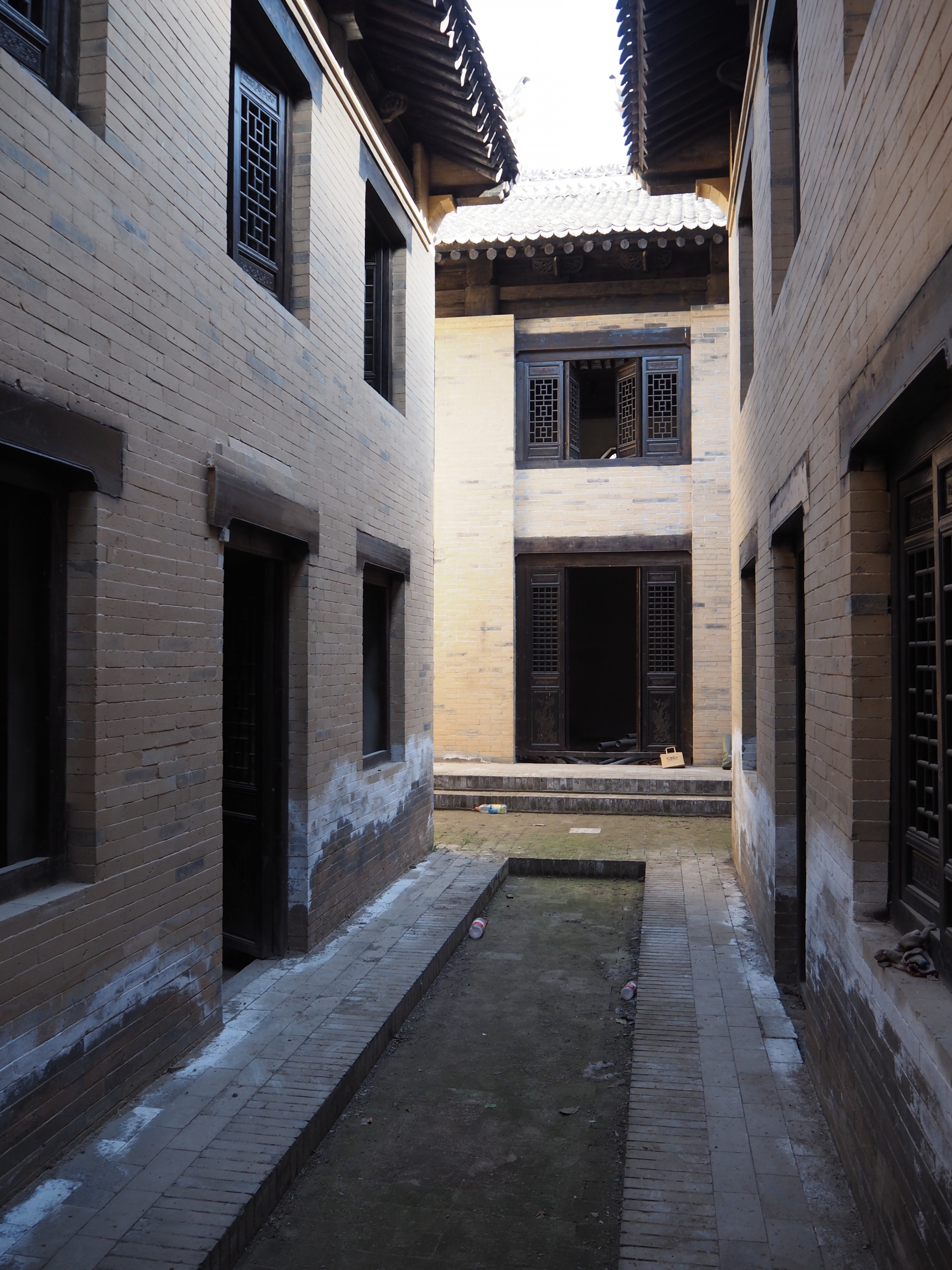
Just one of many creepy little avenues.
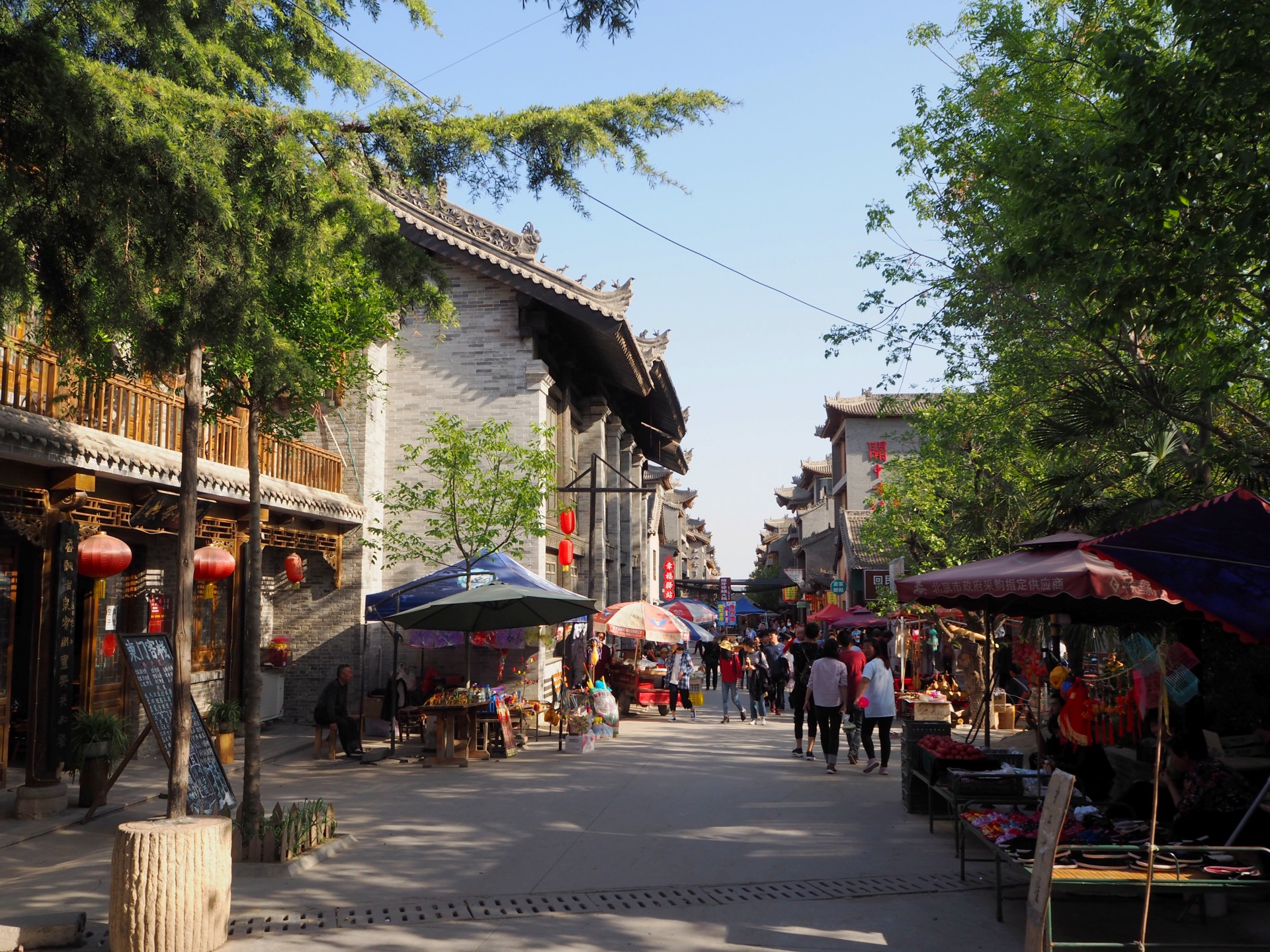
A little more lively here at least.
Terracotta Warriors
The next morning we went to the Terracotta Warriors, the driving force behind the vast majority of trips to Xi’an. After another decent length bus trip (made at rush hour, because we’re well organised), we were all given one way walkie talkies, and tasked with following our guide, who we could hear through our earphones. This directive was made somewhat more difficult by the fact that we couldn’t see her most of the time. She would disappear into a crowd at the drop of a hat, still mumbling into the microphone, or speed into another room to leave us all behind. Occasionally she would deem it useful to hold up her umbrella to help us spot her, but it was black, and all the other guides seemed to be doing exactly the same thing. Some distinguishing colours might have been useful. Anything except black!
Still, when we lost her (and lost connection on the walkie talkie) we could actually get around to looking around. The teeming crowds of people apparently not observing the traditional Tomb Sweeping day festivities made things slightly more difficult, but we weren’t deterred. An army of the dead was calling, and it wasn’t from some fantasy novel. No, these ones are real, and at Xi’an they stand in their thousands. How are they all so well preserved? How long did it take to make them all? What did the Emperor who ordered their construction actually do (aside from acquire 3000 concubines)? These are all questions I missed the answers to. That doesn’t detract from the presence of the Terracotta army though, or the enormity of their discovery. All around the site it’s touted as the eighth wonder of the world, and while I’m not quite sure on that – I’ve seen a lot of supposed eighth wonders of the world – it is pretty awesome.
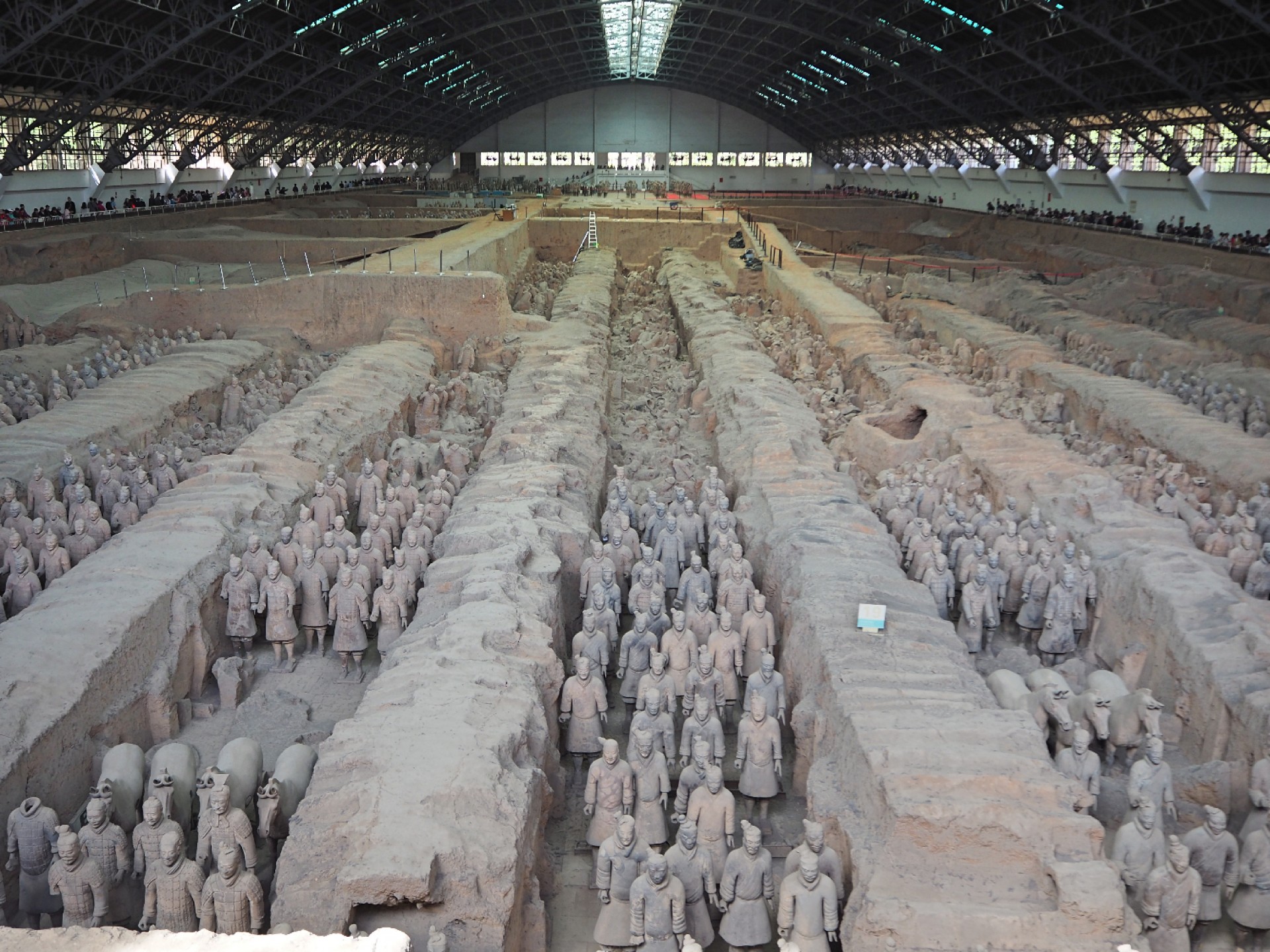
I’ve finally pushed my way to the front of the crowd!
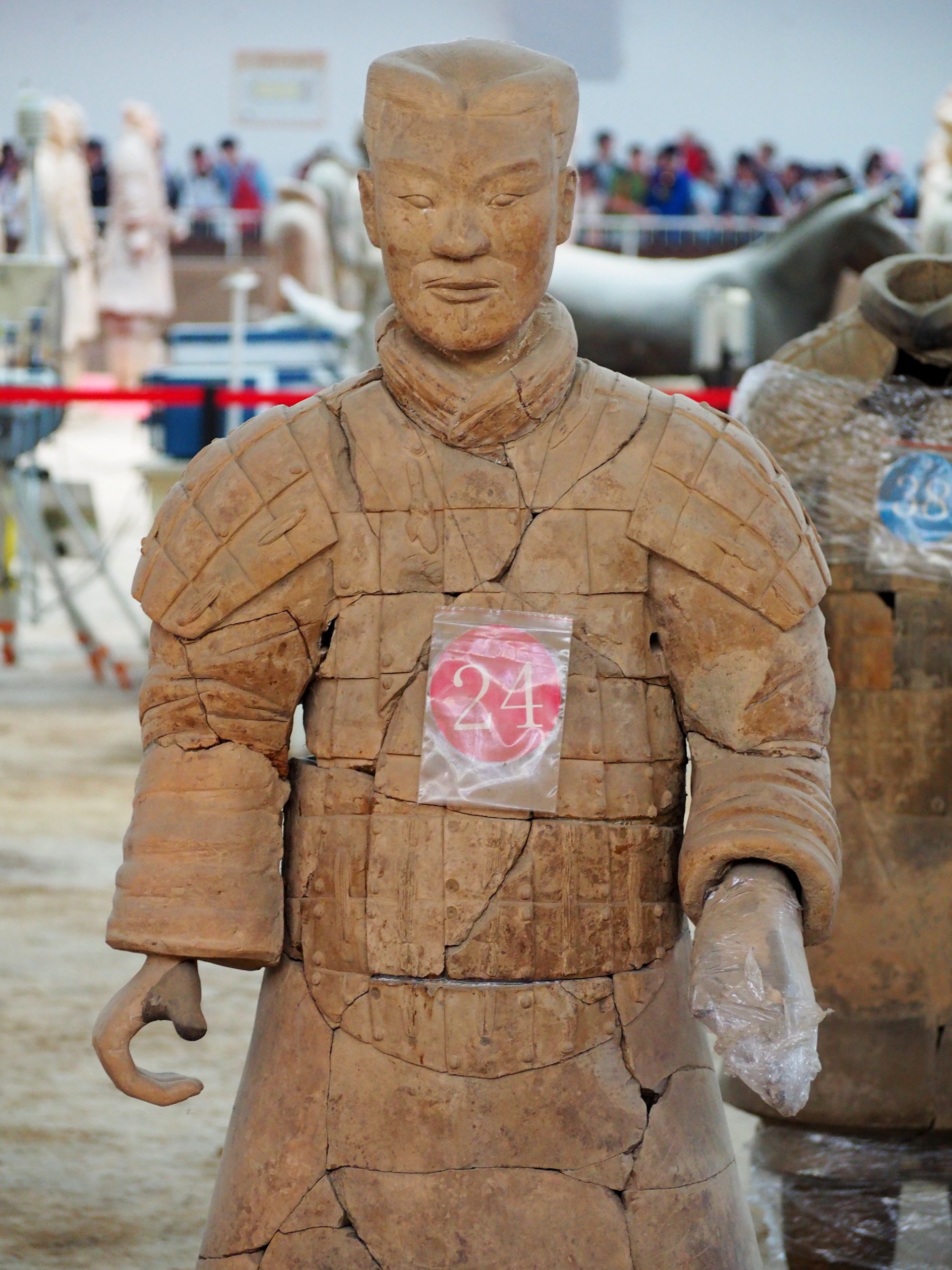
Up close and personal.
Still, we were all pretty pleased when we finally got out, away from the guided tour. Everyone was very hungry, and not hungry for more of the samey food we’d been fed on the tour. We wanted, nay, needed terrible food. Fast food. Junk food. Anything that could increase the likelihood of heart disease. In the spirit of traditional China, we ate at both Subway and McDonalds within minutes of each other. A mere couple of hundred metres from the Army itself.
Random Gardens
Straight after the Warriors we were carted off to some sort of gardens. We weren’t really sure what was there, but a lot of us wanted to get away from the rigidity of the tour and being talked at, so when we spotted a cable car going up the beautiful mountain behind the gardens everyone’s eyes lit up. The cable car station was right next to us, and the cable cars were pretty quick, but alas no one would tell us how long we were going to be there. Just no, it was not possible. Twenty minutes later, inside the gardens and opportunity gone, we found out we would be there for an hour and a half altogether, which would have been plenty of time to go up and down. We weren’t impressed.
Once again, we made the most of it though. The gardens were indeed very pretty, and as we explored we managed to end up in exactly the one place we apparently weren’t supposed to be. To be fair, those hotel grounds looked just like the rest of the gardens, but the Chinese staff were very confused as to why a bunch of laowai were hanging around.
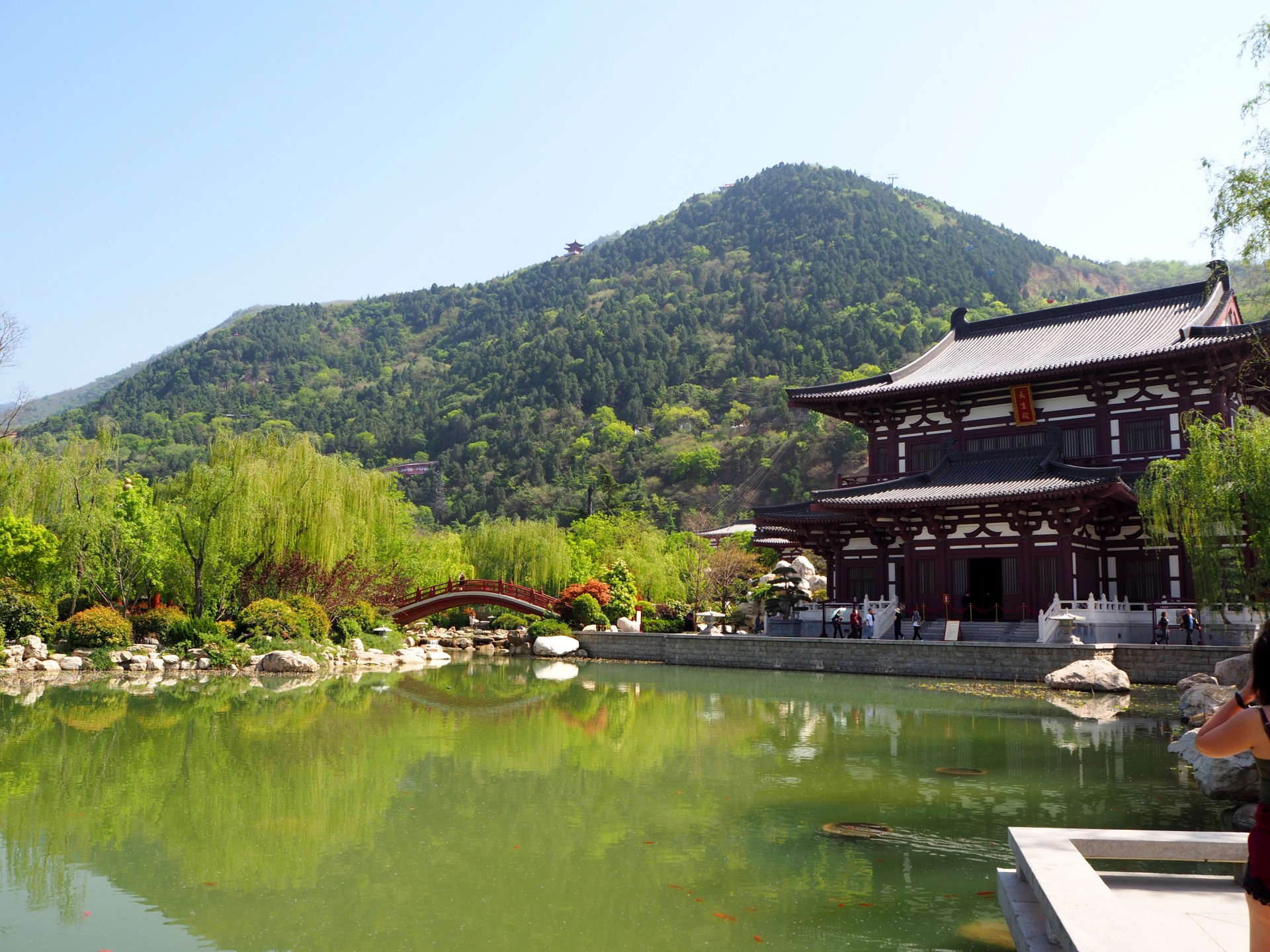
Yeah, I suppose these gardens are pretty nice… That hill though…
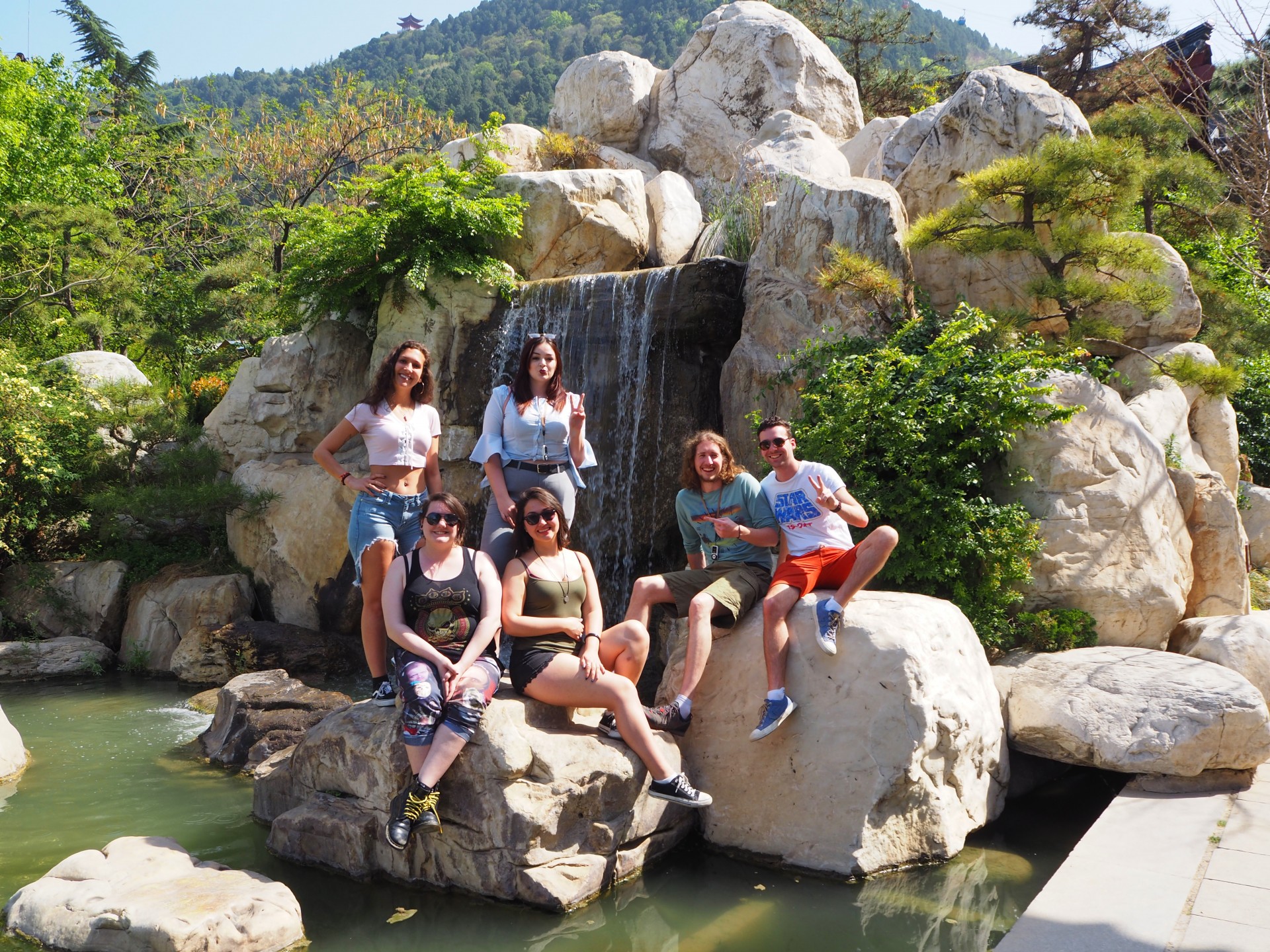
Meet the gang.
Xi’an Proper – The Wall and the Muslim Quarter
Our tour group did eventually return to the city; we couldn’t leave without seeing the ancient city wall. It’s not one of these tiny little city walls you occasionally find around, either. This is a giant of a wall, imposing from all angles and almost certainly daunting if you were attempting to climb it. In fact, it was a little sickening just looking over the edge. Buried amongst all the skyscrapers that fill Xi’an (like every other Chinese city), the wall seems like an anomaly, but a good one at that. Its presence harks back to another era of China – one that we see in the movies, but relatively little of in modern China. Later in the evening we would go back to the wall. In contrast to the day, busy with tourists, at night the wall was quiet and peaceful, almost a getaway from the city right in it’s heart.
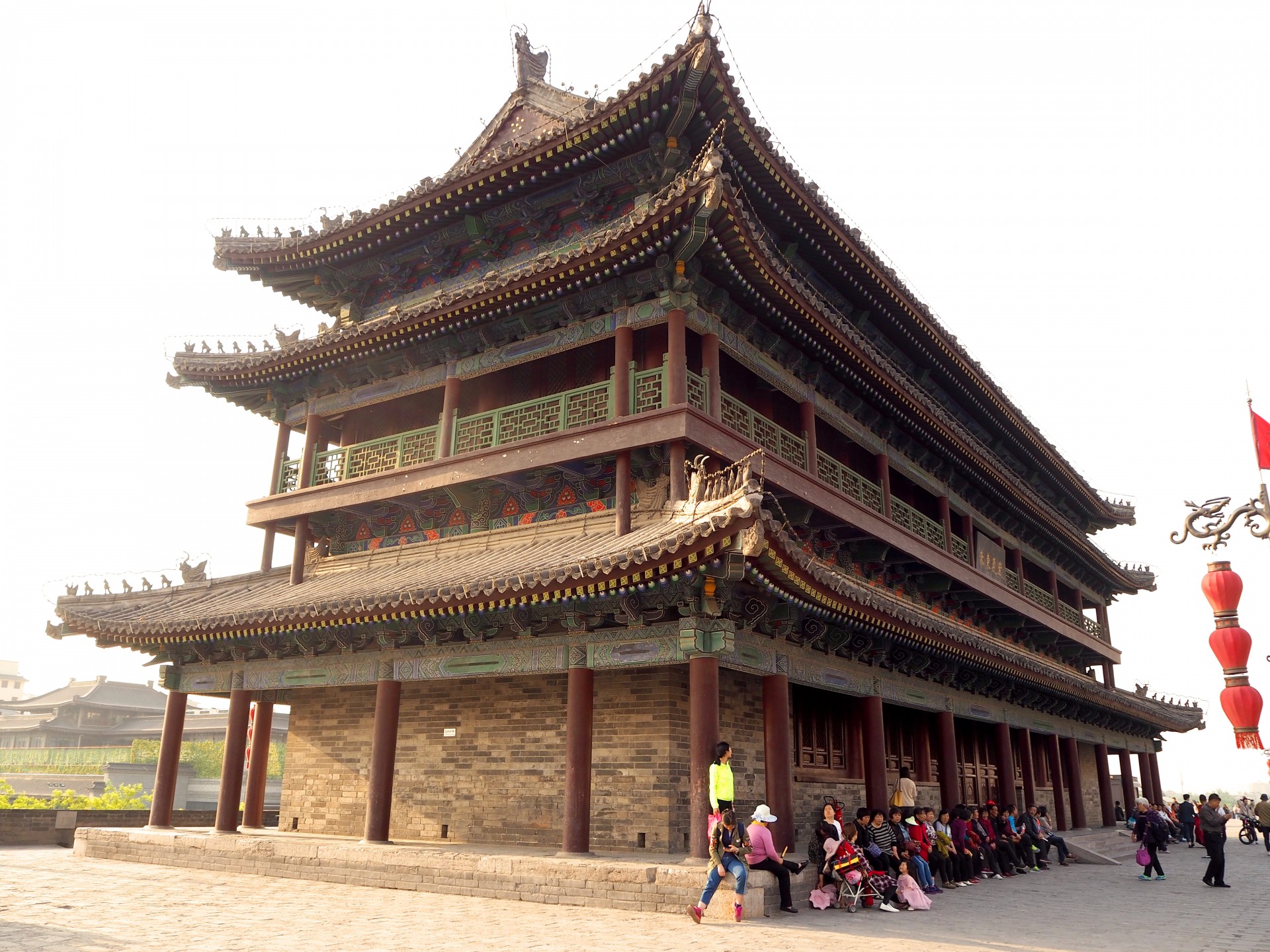
The General’s tower.
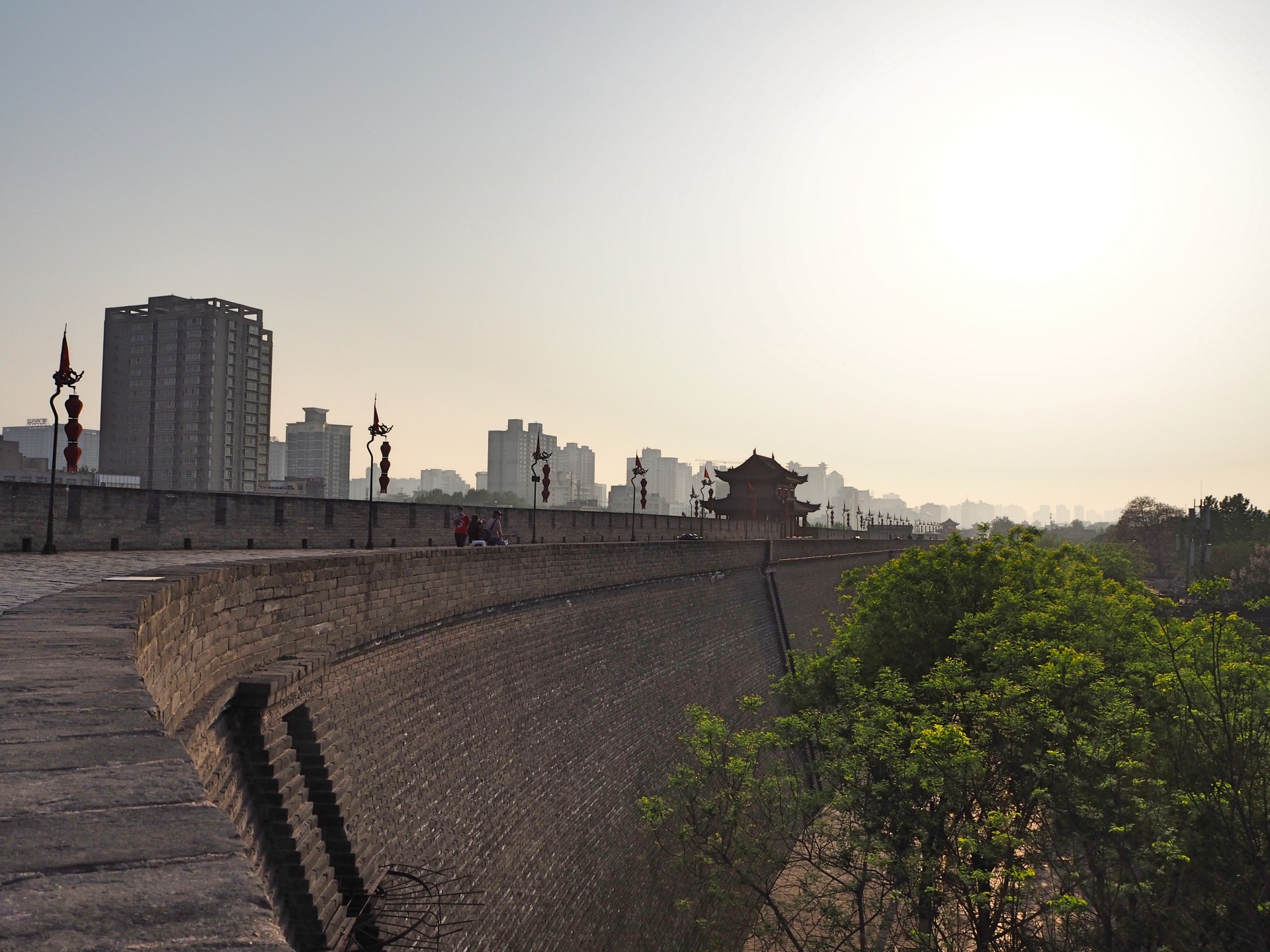
Into the smog…
As the day slid to an end, it was off to the Muslim quarter we went, for some long awaited food. Inside the wall, this area of Xi’an is famed for it’s food filled night markets and the crowds that appear after dark. Steamed meat buns and fried dumplings are just a couple of the dishes that originate from here, and we stopped every so often to try something else, or just look in the window to see what was being made. If you didn’t know that some food required two men with mallets to make, you do now.
At the end of the street stood the magnificent Drum Tower, lit up against the night sky. Traditionally, the drum was beaten to signify sunset each day. Across the way, the Bell Tower, signifier of sunrise, shone just as brightly. As beautiful symbols of the city, Xi’an could do a lot worse.
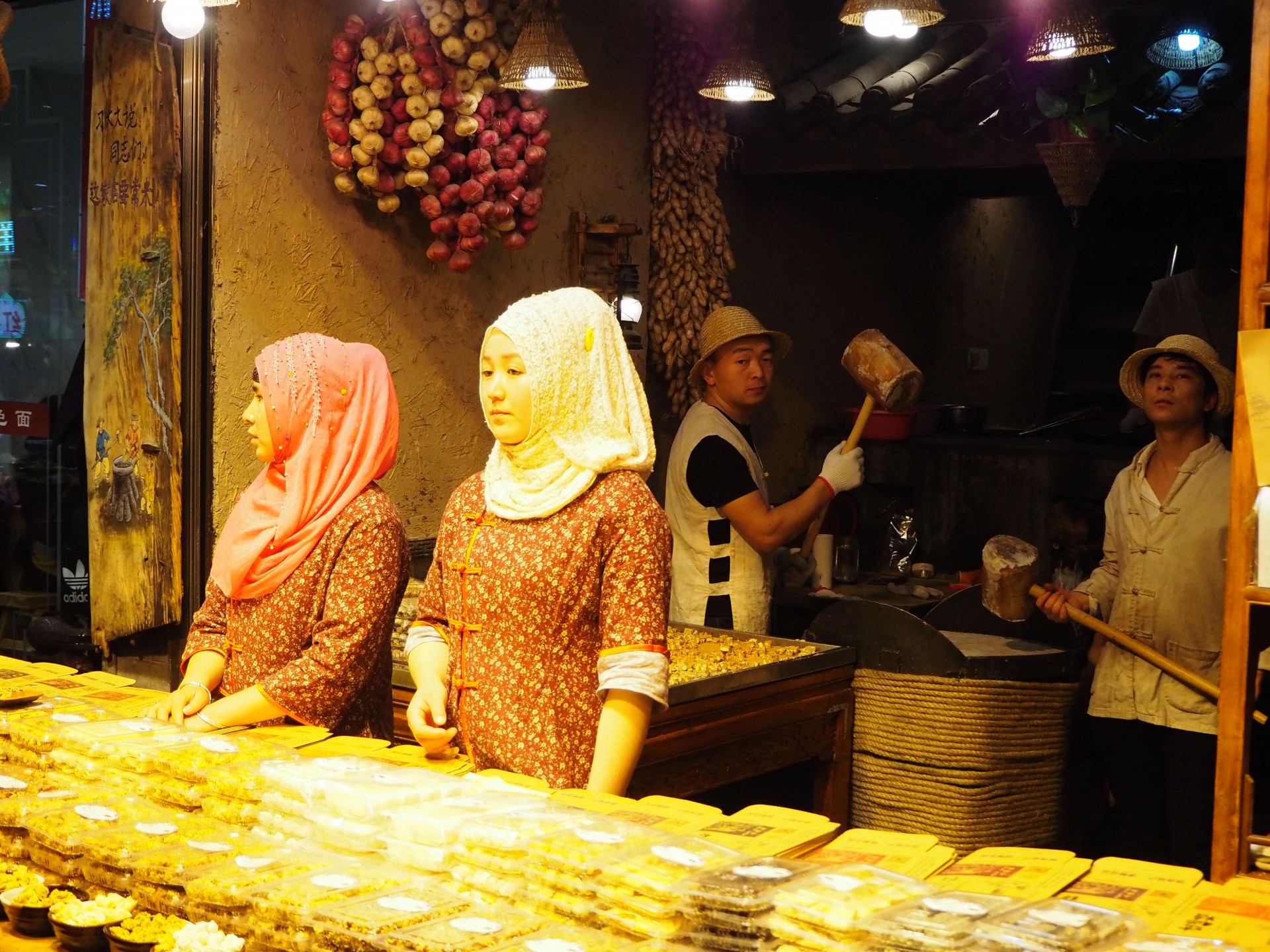
Men with Mallets. Endlessly entertaining.
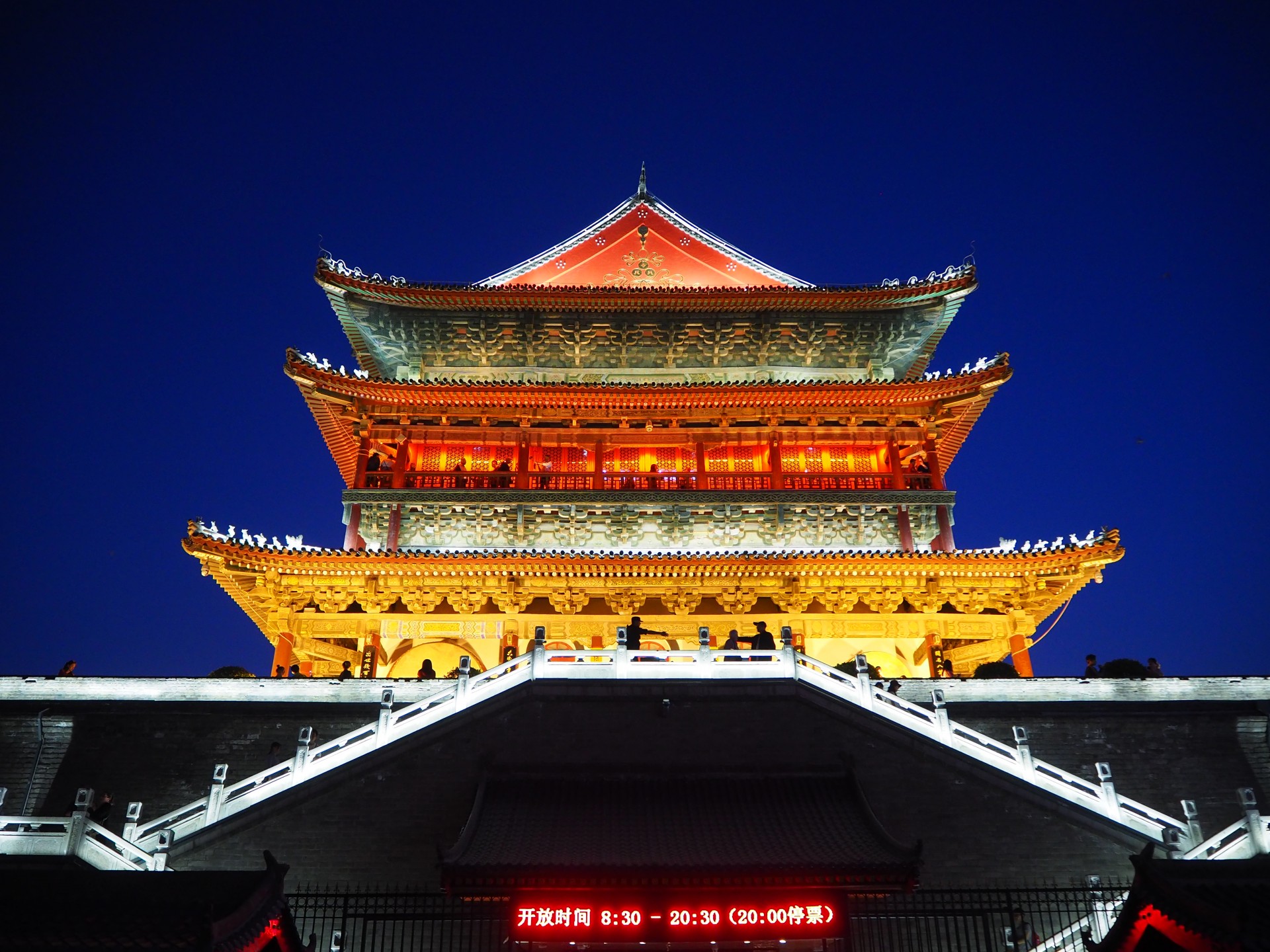
Drum Tower at night.
A Visit to a Monk
As day number three broke, it was with the knowledge that we’d finally managed to plan something away from safety and sanitisation of the tour group. At long last, I’d manage to get some information ahead of time. We would be going to a museum before we left – if I returned to the tour group at the correct location by 10AM I would be allowed to do my own thing before then. Mission almost accomplished right there.
Checking out of the hotel with the group, Casey-Lee and I headed off to a temple for a meeting with a monk. She’d spoken to him the last time she’d been in Xi’an, and promised that if she came back they’d speak again.
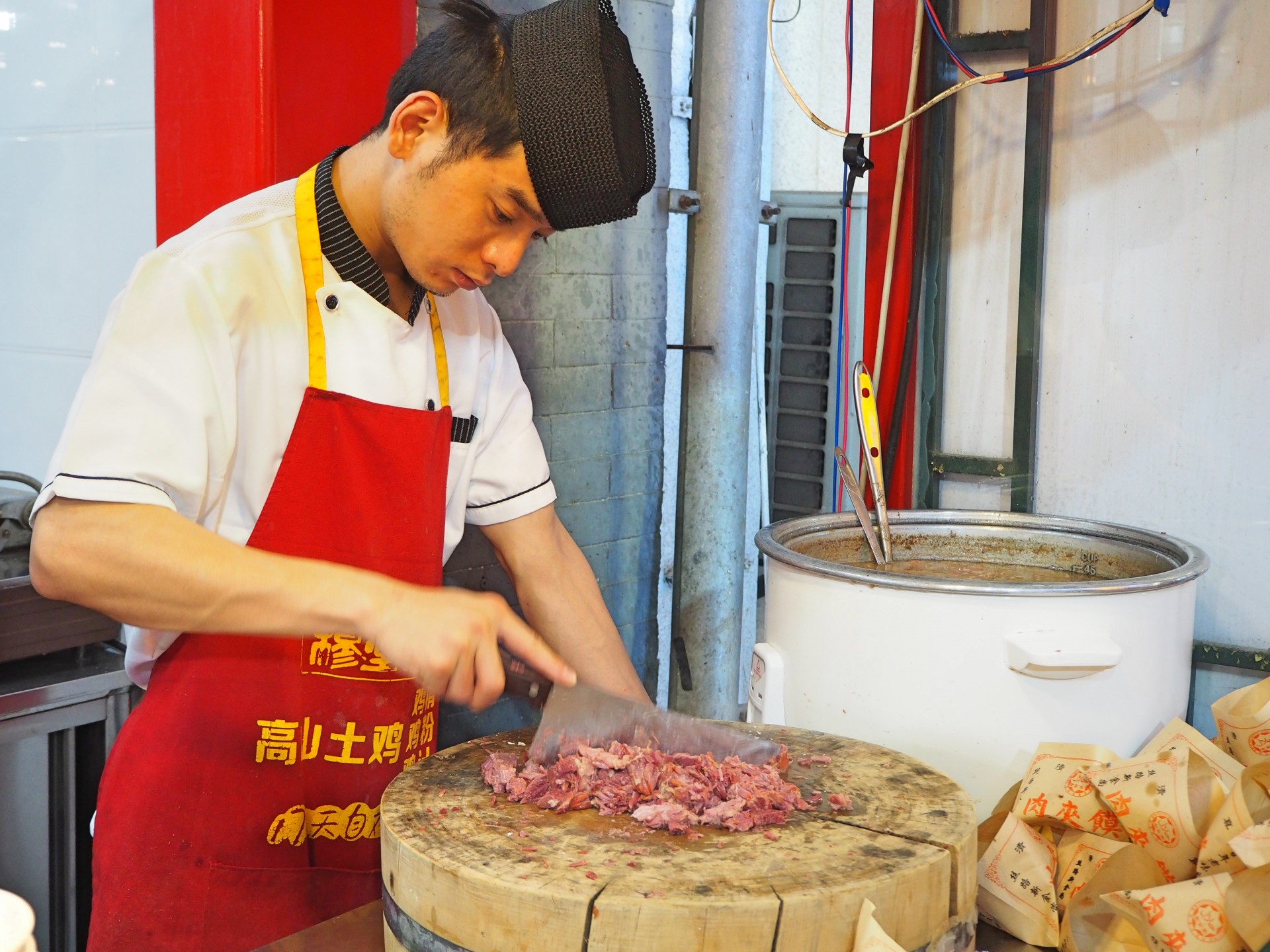
He’s making our sandwiches.
Arranging the meeting was all through WeChat, and the Chinese app’s useful function of translating everything into English, and soon enough we had found him. Kwan Li the monk. He whisked us off on a quick tour of the temple. Whenever he stopped to show us something he would dictate something into his phone, which would then repeat it to us in robotic English. We would respond through WeChat messages. It was all very awkward.
It was still awkward when Kwan led us through some of the dark, windy corridors of the monastery. Where were we going? What were we doing? We didn’t know. That’s was until he opened the door to his cosy little apartment. He set about pouring us tea, while we asked him questions about his job and his life. In turn, he asked us about what we did in China, and why we were here.
We politely declined his offers of food, knowing he had someone important to take around the monastery soon, and when that time came, we took our leave. Not before we took a couple of pictures with him though. He seemed pretty pleased to have spoken to us. You wouldn’t know that from his face though.
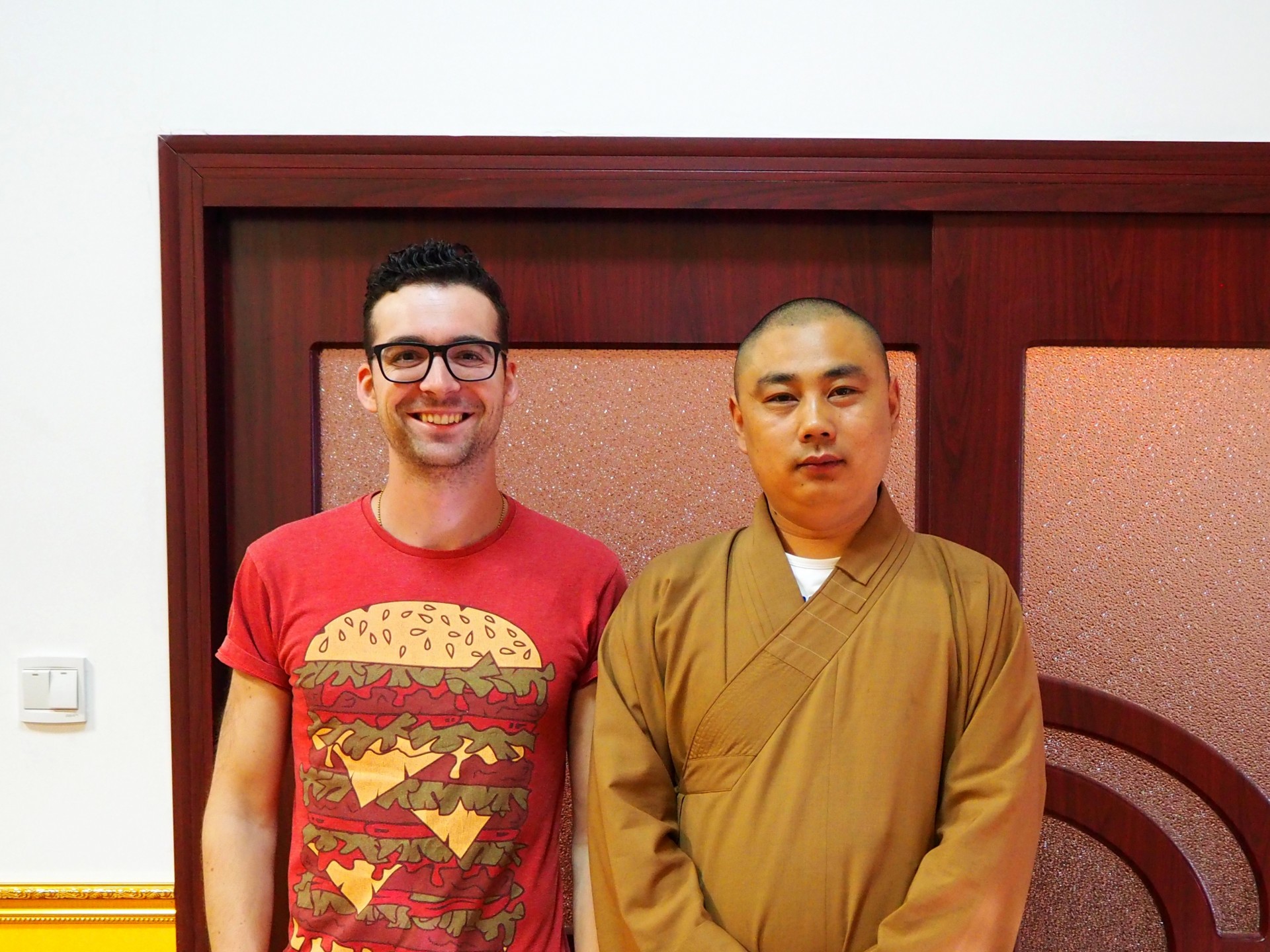
There’s a smile in there somewhere.
Just as I assured my admin, I arrived at the museum with plenty of time to spare. A whole three or four minutes even. I don’t know what she was so worried about! As everyone slowly strolled out from the dark exit into the bright Xi’an sunshine (smog), I asked them their verdict on the museum. There was resounding assessment that going to the monastery had been the better idea. If it hadn’t been already, skipping out on the tour group was fully vindicated there.
From the museum, there were a couple more odd stops before we finally got on the plane. A bus broke down meaning some people had to wait ages, and it turned out that a few had been booked on another flight, six hours later. It was a nice long wait for them. As we arrived back in the centre of Fuzhou though, we all breathed happily. Fuzhou surely has its fair share of pollution (I’ve seen it), but it smelt so fresh after Xi’an that we could have been out in the country. Definitely an underestimated bonus to living here.
So, back to the primary question. Did we manage to execute the plan – escape the school trip tour group? Maybe not to the extend we’d hoped, but yes. Yes we did.
N.B. I may have missed out on writing about some other places (and I suspect the time has passed now) so I’m just going to drop some photos down here. These are for when it’s hot out and you just fancy a cool place for a dip.
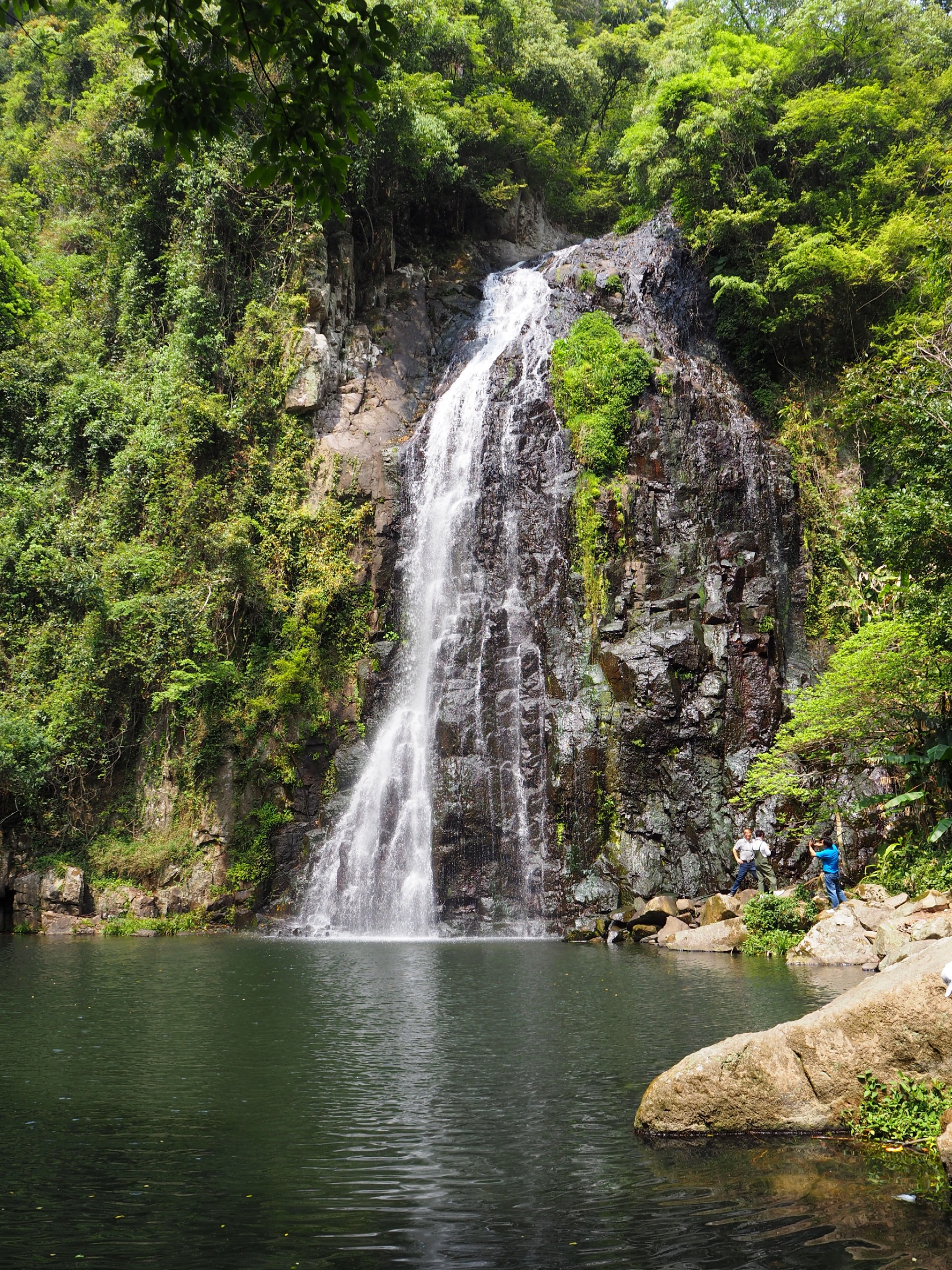
Perfect for a dip in the hot Fuzhou summer.
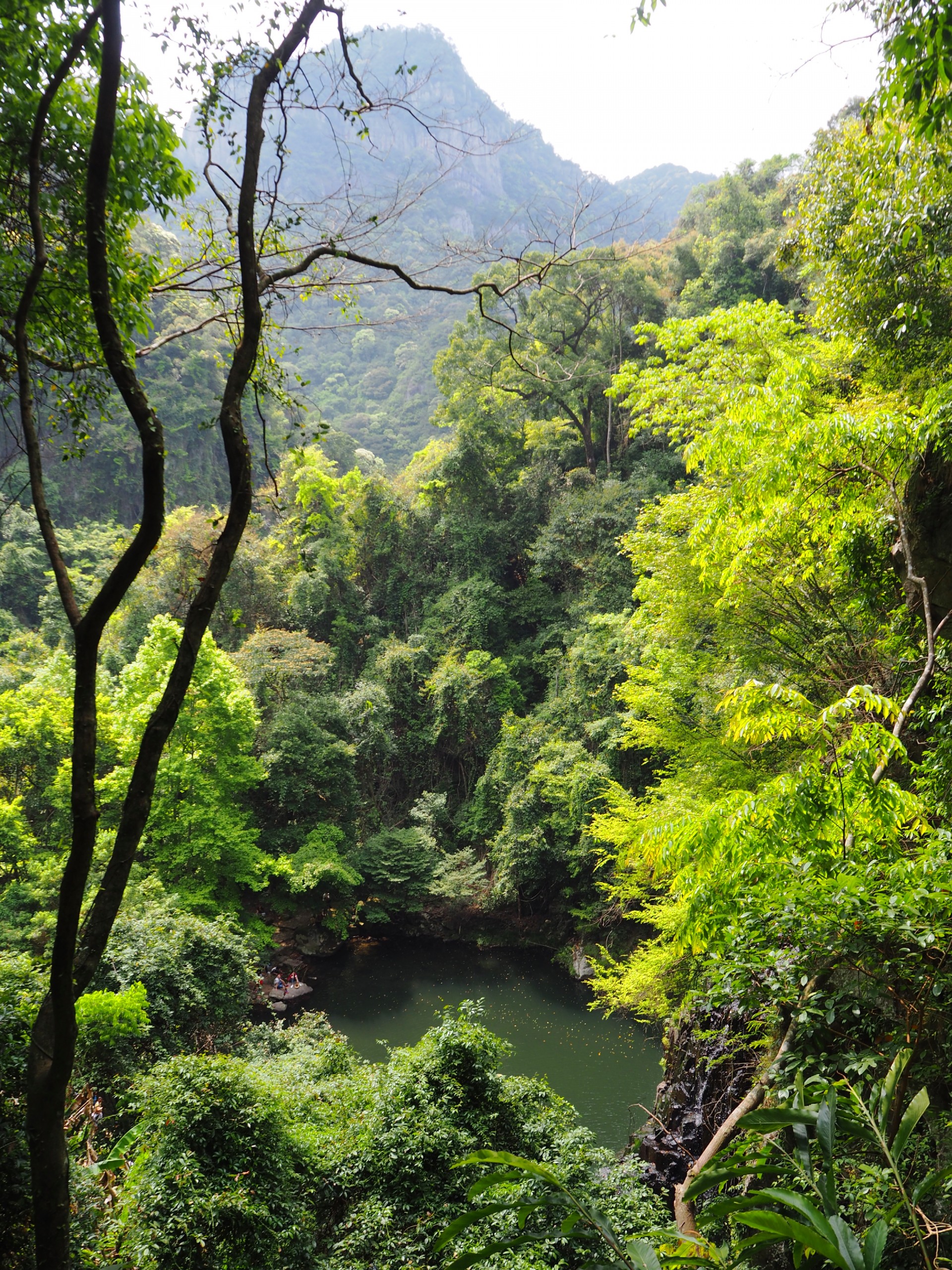
View from above. Not bad, right?
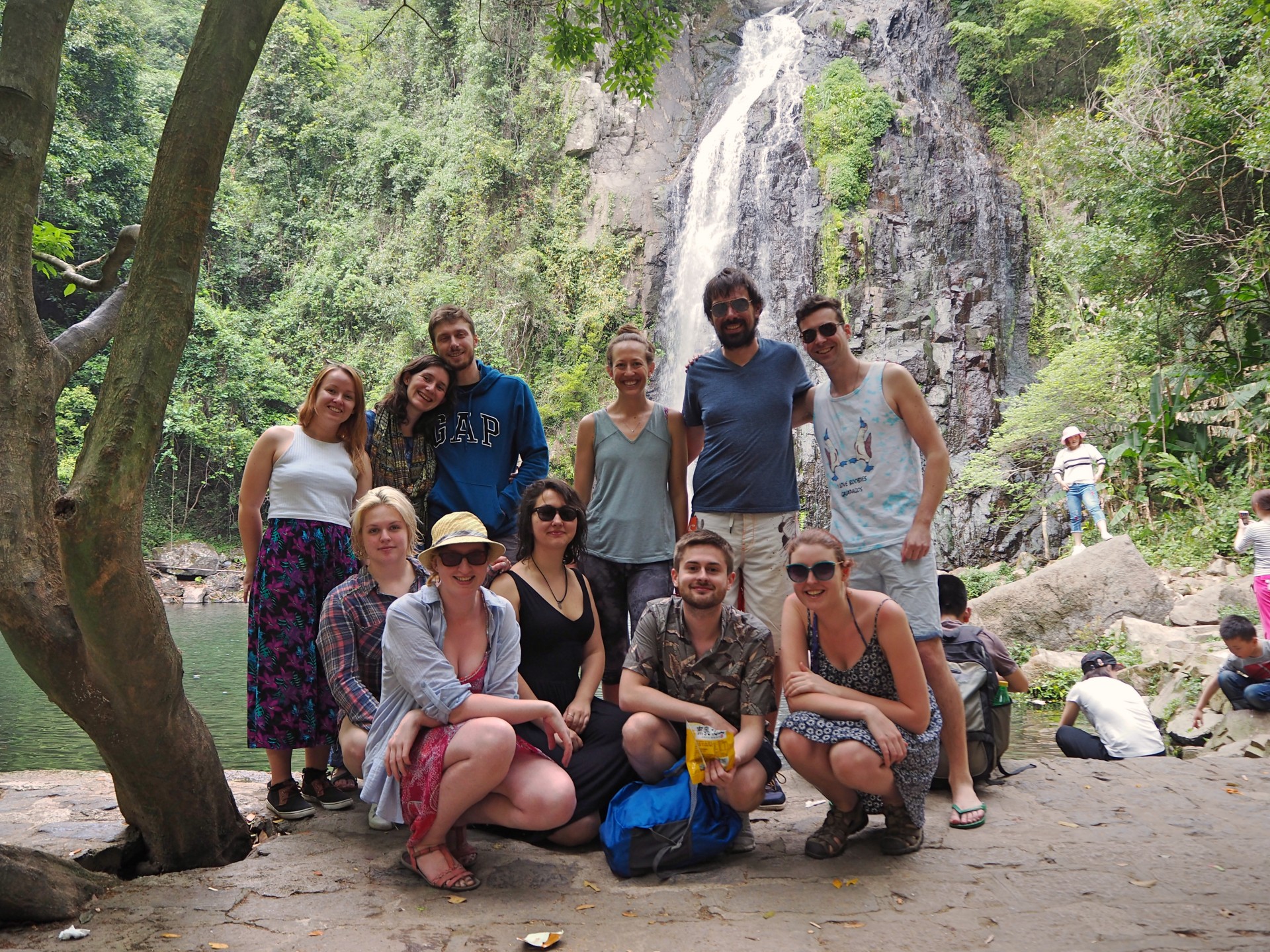
A Team Photo.







